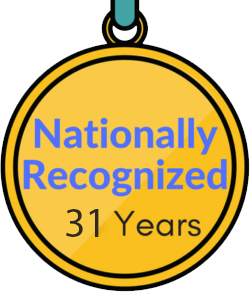What are the biggest dangers of dirty floors in industrial workplaces, and why is it important to keep your space clean? Continue reading to learn more.
Industrial workplaces are a bustling hive of activity, with hundreds and often thousands of people passing through every single day. However, despite the high floor traffic that many businesses experience, the importance of industrial floor cleaning is often underestimated, and looked at purely as a matter of aesthetics.
But the cleanliness of industrial floors matters far beyond aesthetics – in business settings, where heavy machinery, hazardous materials, and constant activity are the norms, the risks associated with dirty floors can escalate significantly.
In this article, we will talk about the biggest dangers of dirty floors in industrial workplaces – and why ensuring a clean and legally compliant industrial environment should be a top priority for any business. Understanding these risks will help you mitigate them effectively, and provide a safe workplace for both clients and employees.
So, without further ado, let’s get right into it:
10 dangers of dirty floors in industrial workplaces
Dirty floors in industrial workplaces pose various hazards that can significantly impact the safety and efficiency of your work environment. Let’s take a better look:
1. Slip and fall accidents
This will probably not come as a surprise, but among the biggest dangers of dirty floors in industrial settings are slip and fall accidents. In fact, according to the National Safety Council, slips and falls are one of the leading causes of injuries in the workplace, sustaining more than 25% of all injuries across all industries.
In addition, the same study by the NFC has shown that half of all same-level slips, trips and falls are the result of unsafe floors – due to issues such as wet or contaminated floors, spills, or floor surfaces in disrepair.
Dirty floors can easily lead to slip and fall accidents for a variety of reasons – on one hand, dirt and grime can obscure important visual cues such as safety lines, warning signs, as well as changes in floor level. They also reduce traction and make it easier for staff to lose their footing.
In addition, debris or clutter can also create physical obstructions, making it more difficult for workers that carry heavy loads or operate heavy machinery to see them and avoid them, leading to trips and falls. Spills can also be particularly hazardous if not cleaned on time.
If you are looking for an effective and reliable industrial floor cleaning company, TCS Floors meets all UL standards for slip resistance coefficients.
2. Contamination
Among the most underestimated dangers of dirty floors in industrial workplaces is contamination, which may lead to health hazards in the long run. According to the National Institute of Health, dirty floors are the perfect breeding ground for bacteria and viruses, which can be particularly dangerous on a larger scale in industries like pharma and food processing.
In addition, industrial floors are often exposed to a variety of chemicals, which are not always cleaned properly, and can create hazardous conditions such as chemical burns or reactions.
If your industrial floor is not only dirty, but also wet or damp, you also risk potential growth of mold and fungi, which can contaminate products and raw materials. Cross-contamination is another potential issue as dirty floors can facilitate the transfer of contaminants from one place to another.
3. Equipment damage
Next on our list of dangers of dirty floors is equipment damage. That’s because dirt and grit on floors can be abrasive for industrial machinery when it comes in contact with it – especially wheels, casters, and conveyors, causing accelerated wear and tear.
Over the long run, this abrasion can degrade the efficiency of the equipment and lead to premature failure or the need for repairs.
In addition, small particles that are accumulating on the floor without being cleaned properly can be drawn into the machinery, clogging systems and air filters, as well as leading to overheating and reduced efficiency.
4. Fire hazards
When talking about the dangers of dirty floors in industrial workspaces, we can’t forget to mention an increased risk for fire hazards. That’s because dust and debris that accumulate on the floors can be highly combustible, especially if they come from materials like paper particles.
Under certain conditions, such as a spark or high heat, these accumulations can ignite and cause a fire, posing a significant safety threat in the workspace.
In addition, floors that are stained with flammable chemicals such as solvents or oils can also pose a serious risk of fire – if they are not properly cleaned by an industrial floor care company, they can create a highly dangerous environment.
5. Poor air quality
Among the biggest dangers of dirty floors is poor air quality – as people and machinery move through the facility, they can stir up dust and particles that have settled on dirty floors. These airborne contaminants can circulate through the workplace, deteriorating the overall air quality.
Excessive dust and dirt can also clog air filters and ventilation systems, reducing their effectiveness. This can lead to poor circulation of air, allowing contaminated air to remain stagnant and become increasingly unhealthy.
6. Pest infestations
Speaking of the dangers of dirty floors, we can’t forget to mention possible pest infestations from rodents such as rats and mice, which can be particularly threatening if they go out of hand.
That’s because the accumulation of organic waste and food particles can attract them as they are in the lookout for food sources. A dirty floor provides ample opportunities for them to feed – which means that regular industrial floor cleaning is an absolute must.
In fact, dirty and cluttered floors not only attract pests, but are also the ideal breeding grounds for them – residues such as crumbs and garbage provide the necessary nutrients for pests to reproduce, leading to rapid infestations.
7. Reduced visibility
Reduced visibility is also another potential hazard in industrial settings with dirty floors. That’s because a lot of companies rely on floor markings for safety and operational efficiency (e.g., pathways, hazard zones, storage areas) – dirt and grime can obscure them, making it difficult for workers to recognize and adhere to them.
In addition, accumulated dirt and dust on floors can absorb and scatter light, reducing the overall effectiveness of lighting in the workspace. This can lead to dimmer and less uniform lighting conditions, making it harder to see potential hazards or navigate the space safely.
8. Legal and compliance issues
Among the most underestimated dangers of dirty floors are potential legal and compliance issues. Regulatory bodies like the Occupational Safety and Health Administration (OSHA) in the United States set standards for workplace safety, including cleanliness.
Dirty floors can be cited as a violation of these standards, especially if they contribute to hazards such as slips, trips, and falls. Failing to meet these standards may not only lead to injuries in the workplace, but also to hefty lawsuits and fines if anything happens as a result of dirty floors.
To add to the risk, improper cleaning or disposal of substances from floors, especially hazardous materials, can lead to environmental violations, attracting penalties from environmental regulatory agencies.
9. Decreased productivity
And of course, dirty floors can also lead to decreased productivity for a variety of reasons:
- Increased risk of accidents and injuries, which lead to reduced workforce availability
- Equipment downtime if dirt and debris end up damaging machinery and equipment
- Inefficient movement around the workplace, which hinders the safe transportation of materials and products
- Increased cleaning and maintenance time, meaning that more time will be spent cleaning rather than on productive activities
- Poor employee morale and performance due to working in a dirty, disorganized environment
- Health issues as a result of poor air quality, such as respiratory issues or allergic reactions
About TCS Floors
If you are looking for a fast, effective and reliable industrial floor cleaning company, look no further than TCS Floors. With over 30 years of experience nationwide, our team of experienced professionals has all the knowledge, skills and equipment to keep a clean and safe environment for employees and clients. Contact us today for a quote.
FAQ
What are the main hazards of dirty floors in industrial workplaces?
Dirty floors in industrial workplaces pose several hazards, including increased risk of slip and fall accidents due to grease or debris, potential health risks from bacterial growth, equipment damage from abrasive particles, and fire hazards from accumulations of combustible materials.
Poor floor cleanliness can also lead to lower productivity and legal compliance issues.
Can industrial dirty floors attract pests?
Yes, dirty floors in industrial settings can attract pests. Accumulated food particles, organic waste, and moisture provide ideal conditions for pests like rodents and insects to thrive, leading to potential infestations and associated health risks.
Regular cleaning is essential for pest control.
How often should industrial floors be cleaned?
The cleaning frequency for industrial floors depends on the nature of the work and foot traffic. Generally, daily cleaning is recommended, with immediate attention to spills. High-use or critical areas may require more frequent or specialized cleaning to maintain safety and hygiene.
Can dirty floors in industrial workplaces lead to legal issues?
Yes, dirty floors in industrial workplaces can lead to legal issues. Non-compliance with safety and hygiene standards may result in violations, fines, or lawsuits, especially if poor cleanliness contributes to accidents or health hazards for employees.
Regular maintenance is crucial for compliance.



